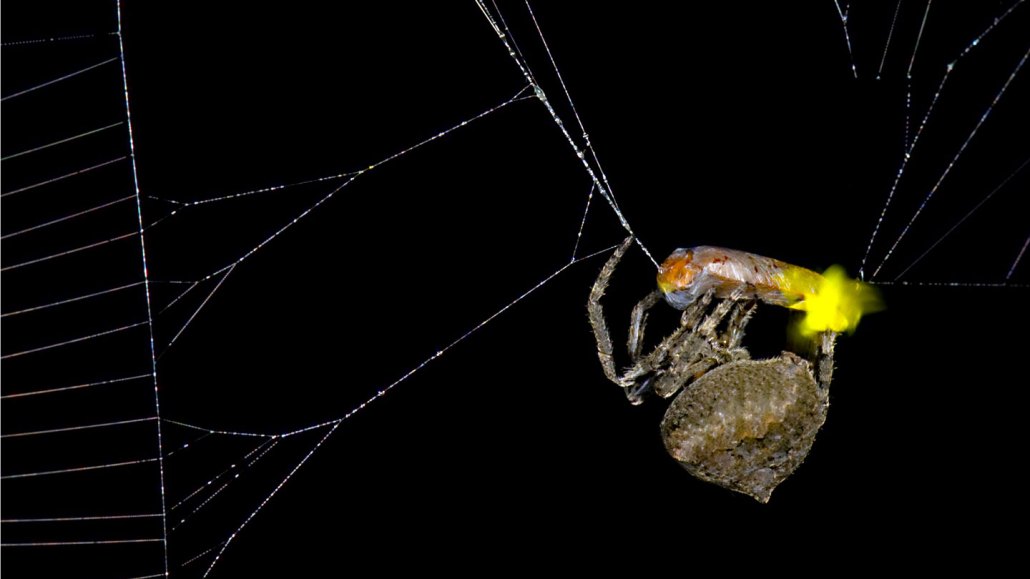This spider uses trapped fireflies to lure in more prey
Male fireflies ensnared in the spider's web flash their lanterns like females, luring more males

An orb weaver spider (Araneus ventricosus) wraps a male firefly (Abscondita terminalis) that got stuck in its web. The spider’s venom or its bite may cause the firefly’s flashing lights to blink in a femalelike pattern, luring other males into the web.
Xinhua Fu







